Analyzing the dynamics of brain circuits with temperature: design and implementation of a miniature thermoelectric device
- PMID: 21291909
- PMCID: PMC3070058
- DOI: 10.1016/j.jneumeth.2011.01.024
Analyzing the dynamics of brain circuits with temperature: design and implementation of a miniature thermoelectric device
Abstract
Traditional lesion or inactivation methods are useful for determining if a given brain area is involved in the generation of a behavior, but not for determining if circuit dynamics in that area control the timing of the behavior. In contrast, localized mild cooling or heating of a brain area alters the speed of neuronal and circuit dynamics and can reveal the role of that area in the control of timing. It has been shown that miniaturized solid-state heat pumps based on the Peltier effect can be useful for analyzing brain dynamics in small freely behaving animals (Long and Fee, 2008). Here we present a theoretical analysis of these devices and a procedure for optimizing their design. We describe the construction and implementation of one device for cooling surface brain areas, such as cortex, and another device for cooling deep brain regions. We also present measurements of the magnitude and localization of the brain temperature changes produced by these two devices.
Copyright © 2011 Elsevier B.V. All rights reserved.
Figures
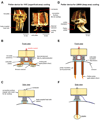
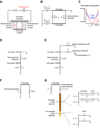

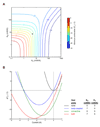
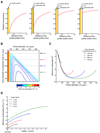
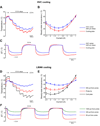
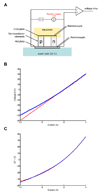
Similar articles
-
Rapid prototyping for neuroscience and neural engineering.J Neurosci Methods. 2008 Jul 30;172(2):263-9. doi: 10.1016/j.jneumeth.2008.03.011. Epub 2008 Apr 1. J Neurosci Methods. 2008. PMID: 18565590
-
Use of a Peltier chip with a newly devised local brain-cooling system for neocortical seizures in the rat. Technical note.J Neurosurg. 2006 Jan;104(1):150-6. doi: 10.3171/jns.2006.104.1.150. J Neurosurg. 2006. PMID: 16509160
-
Targeted brain hypothermia induced by an interstitial cooling device in human neck: theoretical analyses.Eur J Appl Physiol. 2007 Sep;101(1):31-40. doi: 10.1007/s00421-007-0451-6. Epub 2007 Apr 12. Eur J Appl Physiol. 2007. PMID: 17429679
-
[Practical means of temperature control].Ann Fr Anesth Reanim. 2009 Apr;28(4):358-64. doi: 10.1016/j.annfar.2009.02.024. Epub 2009 Mar 27. Ann Fr Anesth Reanim. 2009. PMID: 19328644 Review. French.
-
New methods for localizing and manipulating neuronal dynamics in behaving animals.Curr Opin Neurobiol. 2011 Oct;21(5):693-700. doi: 10.1016/j.conb.2011.06.010. Epub 2011 Jul 15. Curr Opin Neurobiol. 2011. PMID: 21763124 Free PMC article. Review.
Cited by
-
Modeling the Spatiotemporal Dynamics of Light and Heat Propagation for In Vivo Optogenetics.Cell Rep. 2015 Jul 21;12(3):525-34. doi: 10.1016/j.celrep.2015.06.036. Epub 2015 Jul 9. Cell Rep. 2015. PMID: 26166563 Free PMC article.
-
Representation of interval timing by temporally scalable firing patterns in rat prefrontal cortex.Proc Natl Acad Sci U S A. 2014 Jan 7;111(1):480-5. doi: 10.1073/pnas.1321314111. Epub 2013 Dec 23. Proc Natl Acad Sci U S A. 2014. PMID: 24367075 Free PMC article.
-
Fabrication of an inexpensive, implantable cooling device for reversible brain deactivation in animals ranging from rodents to primates.J Neurophysiol. 2012 Jun;107(12):3543-58. doi: 10.1152/jn.01101.2011. Epub 2012 Mar 7. J Neurophysiol. 2012. PMID: 22402651 Free PMC article.
-
Wireless implantable optical probe for continuous monitoring of oxygen saturation in flaps and organ grafts.Nat Commun. 2022 May 30;13(1):3009. doi: 10.1038/s41467-022-30594-z. Nat Commun. 2022. PMID: 35637230 Free PMC article.
-
Conduction block of mammalian myelinated nerve by local cooling to 15-30°C after a brief heating.J Neurophysiol. 2016 Mar;115(3):1436-45. doi: 10.1152/jn.00954.2015. Epub 2016 Jan 6. J Neurophysiol. 2016. PMID: 26740534 Free PMC article.
References
-
- Abeles M. Corticonics. Cambridge University Press; 1991.
-
- Arbas EA, Calabrese RL. Rate modification in the heartbeat central pattern generator of the medicinal leech. J Comp Physiol A. 1984;155:783–794.
-
- Bauer M, von Helversen O. Separate localization of sound recognizing and sound producing neural mechanisms in a grasshopper. J Comp Physiol A. 1987;161:95–101.
-
- Bech C, Midtgård U. Brain temperature and therete mirabile ophthalmicum in the Zebra finch (Poephila guttata) J Comp Physiol B. 1981;145:89–93.
MeSH terms
Grants and funding
LinkOut - more resources
Full Text Sources
Other Literature Sources

